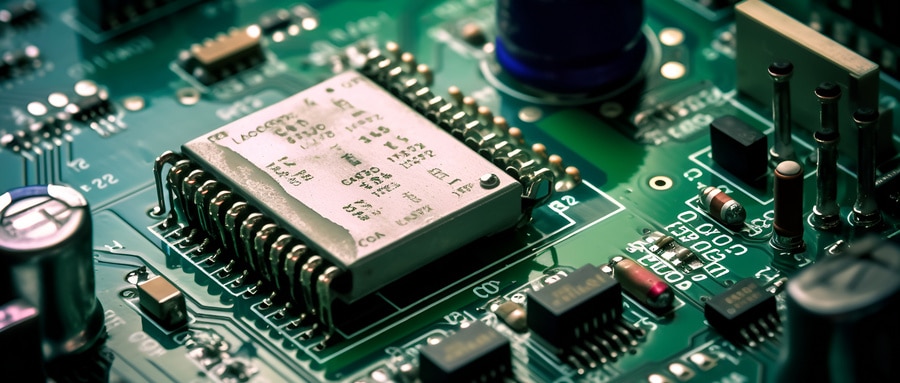Demystifying PCB Cards: A Revolution in Electronics Assembly
Electronics enthusiasts cannot overlook the importance of printed circuit board (PCB) cards in everyday life; their role can be found anywhere from household appliances to space exploration instruments. This article will focus on their significance, design process, wide-ranging applications as well as current trends and future projections.
Let’s start at the very basics. A PCB card, also known as a printed circuit board (PCB), is a flat board made of fiberglass composite epoxy or any other laminate material and used to support and connect electronic components via conductive paths. Their introduction revolutionized electronic assembly by eliminating complex wiring systems while offering simple yet practical and efficient solutions for complex electronic circuits.
Designing a PCB card can be an intricate yet captivating journey, comprising various stages from conceptualising a schematic diagram, layout designing, fabrication and assembly and testing. At every turn requires precision, knowledge of current technological trends as well as proficiency with current techniques.
PCB cards have long been recognized for their durability and dependability. Constructed to be robust yet efficient, PCB cards have become indispensable components in various industry sectors; examples of such applications include computers, automobiles, satellites, medical equipment and home appliances among others.
PCB cards’ potential is far from exhausted despite their many applications. As technology develops quickly, so too does demand for more powerful, resilient, and energy-efficient cards – and innovative technologies such as high-speed designs, microvias, and HDI manufacturing are constantly pushing boundaries of what is possible.
One of the most exciting prospects of PCB technology is its potential integration with Artificial Intelligence (AI). As AI chips become ever more sophisticated, accommodating PCB designs becomes ever more prevalent; therefore it seems plausible to predict that their development might converge with AI technologies to produce smarter and more capable electronic devices.

PCB cards contain much more than meets the eye. As powering engines for our daily electronics, their contributions to technology–as we know it–are immeasurable. Looking ahead, we can expect that PCB technology will continue to advance, ushering in innovative, efficient transformations across various industry sectors.
This article seeks to shed light on the world of PCB cards. Not only is its goal to inform, but also instill an appreciation of these micro powerhouse cards’ contribution to modern technology. Get ready for an adventure that will transform your perception of electronics landscape while immersing you deeper into fascinating PCB world. Unlock its unlimited potential!
PCB Card FAQ:
- Q: What is a printed circuit board card?
A: A printed circuit board card, often referred to as a circuit board, is a board with electronic components that connects electrical components through conductive tracks, pads and other features etched from copper sheets laminated onto a non-conductive substrate. - Q: Are printed circuit board cards the same as motherboards?
A: While a motherboard is a type of printed circuit board card, not all printed circuit board cards are motherboards. The PCB in a motherboard holds and connects everything from the processor and memory to the various peripheral ports. - Q: How do I know what parts are on my printed circuit board card?
A: printed circuit board cards are usually clearly labeled, and a datasheet or user manual can provide further information about each part. - Q: Can I repair a damaged printed circuit board card?
A: While some basic issues like a blown capacitor may be repairable, smaller or more delicate components can be difficult to replace. Professional assistance is usually recommended. - Q: Where can I get a custom printed circuit board card?
A: There are many manufacturers and vendors online that provide custom printed circuit board card services. Make sure to provide them with complete and accurate specifications for your card. - Q: Can a printed circuit board card survive in high-heat situations?
A: PCBs are intended to be durable, but they have their limit. The operating temperature should be kept within the range specified by the manufacturer to prevent damage. - Q: Are there different types of printed circuit board cards?
A: Yes, there are different types of PCBs including single-sided, double-sided, and multi-layered. The choice depends on complexity and performance needs. - Q: What does the “B” in PCB card mean?
A: The “B” in PCB stands for “board.” So a PCB card is essentially a Printed Circuit Board card. - Q: Can printed circuit board cards be recycled?
A: Yes, but because they contain metals and potentially hazardous materials, they should be recycled at a specialized facility. - Q: Are there different sizes of printed circuit board cards?
A: Yes, printed circuit board cards come in various sizes depending on the intended use. For example, the size of a PCB for a smartphone is much smaller compared to a PCB for a TV or a computer.























